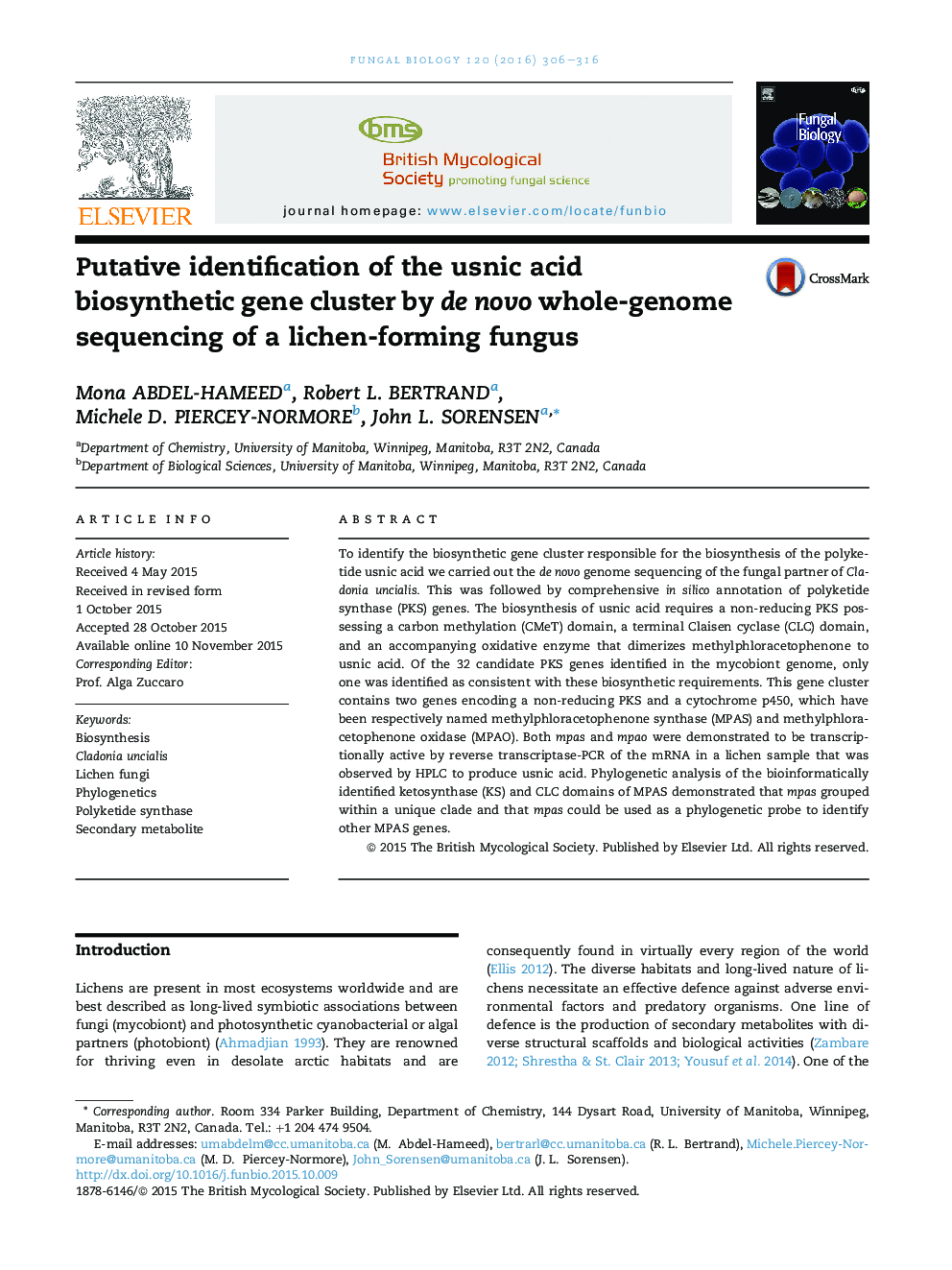| کد مقاله | کد نشریه | سال انتشار | مقاله انگلیسی | نسخه تمام متن |
|---|---|---|---|---|
| 4356781 | 1299997 | 2016 | 11 صفحه PDF | دانلود رایگان |

• The genome of the mycobiont of the lichen Cladonia uncialis has been sequenced.
• There were 32 polyketide synthase genes annotated in the C. uncialis genome.
• The usnic acid biosynthetic gene cluster has been putatively identified.
• This is the first putative identification of an usnic acid gene cluster in lichen.
To identify the biosynthetic gene cluster responsible for the biosynthesis of the polyketide usnic acid we carried out the de novo genome sequencing of the fungal partner of Cladonia uncialis. This was followed by comprehensive in silico annotation of polyketide synthase (PKS) genes. The biosynthesis of usnic acid requires a non-reducing PKS possessing a carbon methylation (CMeT) domain, a terminal Claisen cyclase (CLC) domain, and an accompanying oxidative enzyme that dimerizes methylphloracetophenone to usnic acid. Of the 32 candidate PKS genes identified in the mycobiont genome, only one was identified as consistent with these biosynthetic requirements. This gene cluster contains two genes encoding a non-reducing PKS and a cytochrome p450, which have been respectively named methylphloracetophenone synthase (MPAS) and methylphloracetophenone oxidase (MPAO). Both mpas and mpao were demonstrated to be transcriptionally active by reverse transcriptase-PCR of the mRNA in a lichen sample that was observed by HPLC to produce usnic acid. Phylogenetic analysis of the bioinformatically identified ketosynthase (KS) and CLC domains of MPAS demonstrated that mpas grouped within a unique clade and that mpas could be used as a phylogenetic probe to identify other MPAS genes.
Figure optionsDownload as PowerPoint slide
Journal: Fungal Biology - Volume 120, Issue 3, March 2016, Pages 306–316